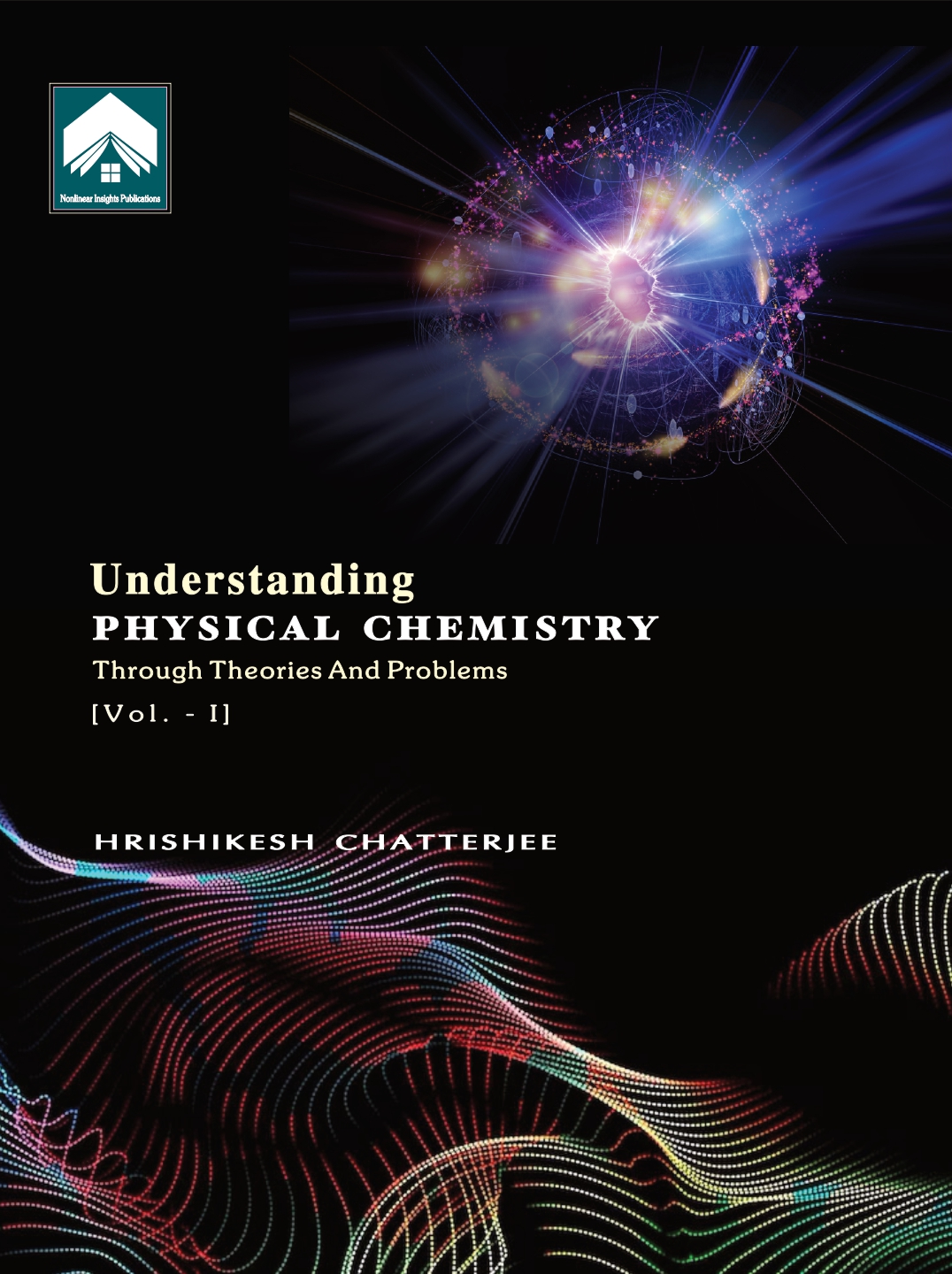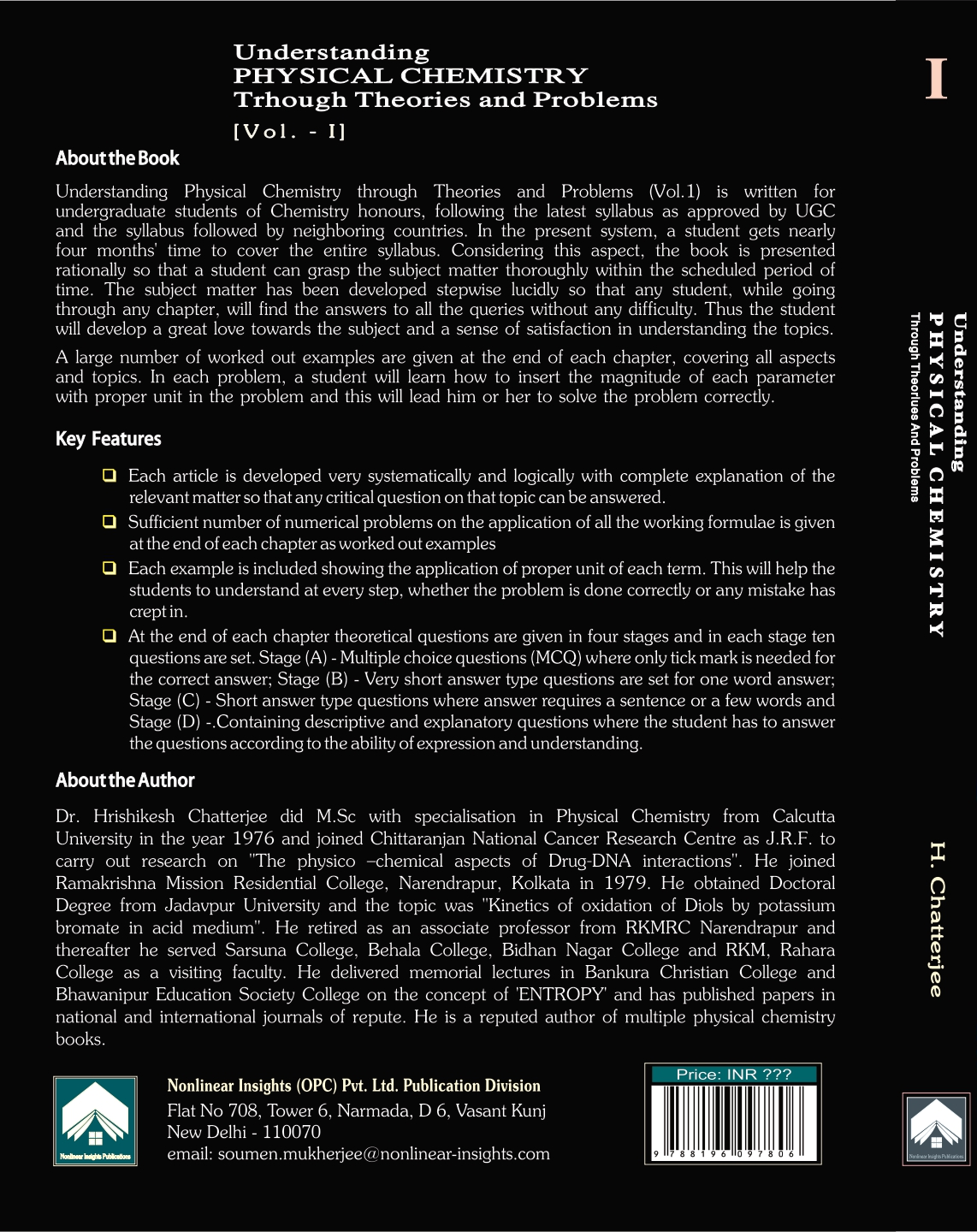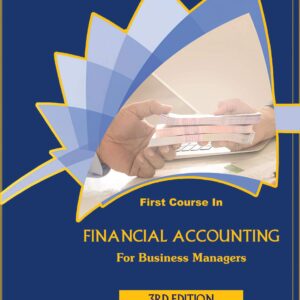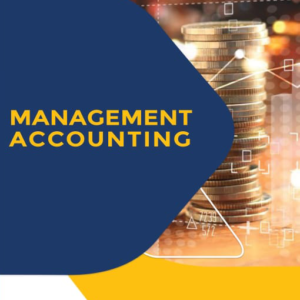Description
by Hrishikesh Chatterjee- release date- April 2023
Target readers: Students of UG (Hons.) and Graduate Chemistry courses.
Content
CHAPTER 1
KINETIC THEORY OF GASES 1 – 56
1.1 Assumptions (Postulates) of Kinetic theory 2
1.2 Consequences of the assumptions 2
1.3 Justification of the fact that collisions are perfectly elastic 3
1.4 Concept of Pressure and temperature 3
1.5 Velocity of molecules 3
1.6 Derivation of pressure from kinetic theory 5
1.7 Concept of temperature from kinetic theory 6
1.8 More about pressure of a gas from kinetic equation 7
1.9 Gas laws from kinetic theory 7
1.10 Definite pattern of distribution of molecular speed is a necessity 8
1.11 Assumptions for Maxwell’s law of distribution of molecular speed 8
1.12 Maxwell’s law of distribution of molecular speed 9
1.13 Characteristic features of speed distribution law for three dimension 14
1.14 Calculation of the magnitude of average properties 16
1.15 Frequency of collision of molecules with unit area of the wall 20
1.16 Application of wall collisions frequency 21
1.17 Frequency of binary collision between similar molecules 22
1.18 Frequency of binary collision between molecules of different gases 24
1.19 Mean free path 25
1.20 Effect of Pressure on mean free path 25
1.21 Effect of Temperature on mean free path 26
1.22 Distribution of kinetic energy 26
1.23 Fraction of molecules possessing Kinetic energy ³ e¢ 28
1.24 Average kinetic energy for three dimension 29
1.25 Energy distribution function in two dimension 29
1.26 Fraction of molecules possessing kinetic energy in two dimension 29
1.27 Degrees of freedom 30
1.28 Equipartition Principle 31
1.29 Heat Capacity from equipartition principle 32
1.30 Boltzmann distribution law 33
1.31 Characteristics of barometric formula 34
1.32 Flow of gas and transport phenomena (i.e. Transport Properties of Gas) 35
1.33 Viscosity of gas ( h ) 37
1.33.1 Assumptions in the Derivation of from kinetic theory 37
1.33.2 Derivation of the expression 1
h = r l Ca 37
1.34 Dependence of h on Temperature : 39
1.34.1 The Equation 1
3
h = r l c is not valid at very low
pressure or very high pressure: 39
Short review of the chapter 40
Worked Out Problems 43
Exercise, MCQ and Questions 47
CHAPTER 2
REAL GAS 57 – 88
2.1 Deviation from ideal behaviour 57
2.2 Causes of deviation 60
2.3 Van der Waals equation of state 61
2.4 Origin of intermolecular interactions 63
2.5 Validity of Van der Waals’ equation 66
2.5.1 Experimental P-V Isotherm of a Real Gas 66
2.5.2 Continuity of states 66
2.5.3 PV-Isotherm from Van der Waals Equation 67
2.6 Critical State in the light of Van der Waals equation 68
2.6.1 Explanation of PV-P curve, (i.e. Amagat’s curve) 69
by Van der Waals equation
2.7 Amagat curve of a gas at various temperatures 70
2.7.1 Boyle temperature from Van der Waals equation 71
2.8 Compressibility factor 72
2.9 Reduced equation of state 74
2.10 Dieterici equation of state 76
2.10.1 Dieterici equation at low pressure 76
2.10.2 Verification of Dieterici’s equation 77
2.11 Berthelot equation 78
2.11.1 Calculation of ‘b’ from density temperature 78
2.11.2 Values of the critical parameters in terms of ‘a’ and ‘b’ 78
2.11.3 Modified Berthelot equation 79
2.11.4 Relation between TB and TC 79
2.11.5 Reduced equation of state 79
2.12 Virial equation state 80
Short review of the chapter 82
Worked Out Problems 82
Exercise, MCQs and Questions 84
CHAPTER 3
THERMODYNAMICS – I 89 – 124
3.1 Introduction 89
3.2 Fundamental terms used in thermodynamics 90
3.2.1 System 91
3.2.2 Surroundings 90
3.2.3 Universe 91
3.2.4 Classification of system 91
3.2.5 Process 92
3.2.6 Properties 92
3.3 Thermodynamic equilibrium 93
3.4 State function 93
3.5 Mathematical aspects of a state functions 94
3.5.1 Mathematical relations regarding state function 95
3.6 Work 96
3.7 Heat 97
3.8 Internal energy 98
3.9 dq and dw are not exact differentials 99
3.10 Zeroth law of thermodynamics 99
3.11 1st Law of thermodynamics – its development 99
3.11.1 Basic consquence of 1st law 100
3.12 Importance of consideration of frictionless, 101
weightless piston and thermostat
3.13 Ways of transformation of state 102
3.14 Show that during expansion |Wrev|>|Wirr| 106
3.15 Joule’s Experiment 107
3.16 Enthalpy (H) 108
3.16.1 Enthalpy for an ideal gas 109
3.17 æ ö ¶
ç ÷ =
è ø ¶
0
T
H
P
, is a better criterion for ideality of a gas 109
3.18 Heat Capacity (C) 110
3.18.1 Relation between CP and CV
3.18.2 CP – CV for different cases 112
3.19 Adiabatic change 114
3.19.1 Reversible adiabatic expansion of an ideal gas 115
3.19.2 PVg = constant is not an equation of state 116
3.19.3 P-V relationship for a gas obeying the equation 116
P(V – b) = RT
3.19.4 P– V relationship for a Van der Waals gas 116
3.19.5 Comparison of slopes of P–V adiabat and P–V isotherm in case of an ideal gas 117
3.19.6 Reversible adiabatic work during expansion
3.19.7 Irreversible adiabatic change 118
3.19.8 Enthalpy change 119
Short review of the chapter 119
MCQs and Questions 122
CHAPTER 4
THERMOCHEMISTRY 125 – 153
4.1 Introduction 125
4.2 Laws of thermochemistry 126
4.3 Both the laws can be established from the 1st law of thermodynamics 128
4.4 Heat of formation 128
4.5 Dependence of heat of reaction on temperature 129
4.6 Heat of combustion 130
4.7 Heat of solution 130
4.8 Heat of neutralisation 132
4.9 Heat of formation of aqueous solution 133
4.10 Bond enthalpy and bond energy 134
4.11 Resonance energy 136
4.12 Adiabatic flame temperature 137
Short review of the chapter 138
Worked out problems (chapters – 3 and 4) 139
Exercise – (Chapters – 3 and 4), MCQs and Questions 147
CHAPTER 5
THERMODYNAMICS – II 154 – 234
5.1 Need for second law 154
5.2 Conversion of heat into work 155
5.3 Carnot cycle or Carnot engine 157
5.4 Conclusion derived from Carnot cycle 159
5.4.1 The reversed Carnot cycle-a refrigerator or a heat-pump 160
5.5 Kelvin-Planck statement and Clausius statement are equivalent 160
5.6 Carnot theorem 162
5.7 Clausius inequality from Carnot cycle 163
5.8 Thermodynamic scale of temperature 164
5.9 Entropy a new concept to understand spontaneity 164
5.9.1 d Qrev is not an exact differential while d Qrev T
is an exact differential 166
5.9.2 Concept of entropy from Clausius inequality 167
5.9.3 Entropy from Carnot cycle 167
5.9.4 Fundamental characteristics of entropy 168
5.9.5 A bridge between first and second law 169
5.9.6 Calcultion of dS for reversible processes 169
5.10 Entropy change for irreversible processes 175
5.10.1 Prove from Clausius inequality that for a process D ³ ò
d q S
T
180
5.10.2 |Wrev|>|Wirr| from the view point of entropy 181
5.10.3 Entropy and unavailable work or unavailable energy 181
5.10.4 T-S diagram of a Carnot cycle 182
5.10.5 Slope of the entropy vs. temperature plot 183
5.10.6 Justification of Important Aspects of second law
in the light of Entropy: 184
5.11 Free Energy 187
5.12 Criteria of Spontaneity and equilibrium : 188
5.13 Lowering of Gibbs free-energy at constant P, T
means increase of entropy of the universe : 190
5.14 Properties of G 190
5.15 Variation of G with Pressure 191
5.15.1 Variation of G with Temperature 192
5.16 Gibbs-Helmholtz equation 192
5.17 Characteristics of transformation depending 194
upon the value of DH and DS
5.18 Maxwell’s relations 195
5.19 TdS equations 197
5.20 Thermodynamic equation of state 199
5.21 Heat capacity relations 201
5.22 Variation of heat capacity with pressure and volume 203
5.23 Joule-Thomson expansion 204
5.23.1 Design of the experiment to ensure steady state 204
5.24 J-T Expansion is an Isenthalpic process 205
5.24.1 Thermodynamic derivation of mJ.T 206
5.24.2 Inversion curve and isenthalpic curves 206
5.24.3 J-T expansion is irreversible 208
5.24.4 Effect of pressure 208
5.24.5 Effect of temperature on J-T Expansion 209
5.24.6 Expression of mJT for the gas obeying the
equation P(V – b) = RT 210
5.24.7 Expression of mJ.T for the gas
obeying the equation æ ö ç ÷ + = è ø 2
a
P V RT
V
210
5.24.8 Difference between reversible adiabatic cooling
and J-T cooling coefficients : 211
5.24.9 Difference between J-T expansion and adiabatic expansion : 212
5.25 Few Thermodynamic relation 212
Short review of the chapter 214
Worked Out Problems 216
Exercise, MCQs and Questions 226
CHAPTER 6
CHEMICAL KINETICS 235 – 313
6.1 Introduction 235
6.2 Rate of a reaction 236
6.3 Rate law and Rate constant 237
6.4 Order and Molecularity 238
6.5 Integrated rate laws for isolated reactions 239
6.6 Determination of order of reaction 250
6.7 Fast reactions 252
6.8 Opposing reaction 255
6.9 Consecutive reaction 257
6.9.1 Application of Steady-State approximation 260
6.10 Concept of Pre-equilibrium Step 261
6.11 Parallel reaction 262
Thermodynamically controlled and kinetically controlled reactions 263
6.12 Temperature dependence of reaction rate 264
6.13 Chain Reactions 268
6.13.1 Branching chain reaction 271
6.14 Theories of reaction rates 273
6.14.1 Collision Theory 274
6.14.2 Unimolecular reaction (Lindemann Mechanism) 278
6.14.3 Potential Energy Surface, Activation
Energy and Reaction Coordinate. 282
6.14.4 Transition state theory 284
6.14.5 Transition state theory using partition function 287
6.15 Kinetics of catalytic reactions 290
6.15.1 Introduction 290
6.15.2 Catalyst increases the rates of forward and backward reactions equally 290
6.15.3 Classification of catalytic reactions 291
6.15.4 Mechanism of homogeneous catalysis 292
6.15.5 Pre-equilibrium treatment 292
6.15.6 Mechnism of acid-base catalysis 293
6.15.7 Acid catalysed reaction 294
6.15.8 Protolytic mechanism 294
6.15.9 Prototropic mechanism 295
6.15.10 Enzyme catalysis 296
6.15.11 Efect of pH 298
6.15.12 Effect of temperature 299
6.16 Effect of ionic strength on rate of reaction in solution 299
(Primary kinetic salt effect)
6.7 Secondary Kinetic Salt Effect 300
Short review of the chapter 301
Worked Out Problems 304
Exercise, MCQs and Questions 307
CHAPTER 7
VISCOSITY 314 – 334
7.1 Introduction 314
7.2 Stream line flow 314
7.3 Turbulent flow 315
7.4 Viscosity 316
7.5 Viscosity coefficient (h) 317
7.6 Newtonian liquid and non-Newtonian fluid 318
7.7 Critical velocity 318
7.8 Derivation of Poiseuille’s equation 319
7.9 Error in the determination of h largely depends upn the error of ‘r’ 321
7.10 Temperature dependence of viscosity coefficient of liquid 322
7.11 Effect of pressure on viscosity coefficient 322
7.12 Determination of viscosity coefficient 323
7.13 Application of Poiseuille’s formula for gas 325
7.14 Rankine’s Method 326
7.14 Viscosity of solution containing macromolecule 326
Short review of the chapter 328
Worked Out Problems 329
Exercise , MCQs and Questions 332
CHAPTER 8
THERMODYNAMICS OF SYSTEM OF VARIABLE COMPOSITION 335 – 358
8.1 Systems with variable composition 335
8.2 Concept of partial molar free energy and partial molar properties 336
8.3 Lowering of mi
determines the direction of mass transfer 339
8.4 mi
Is also called chemical potential 340
8.5 Gibbs Duhem equations 341
8.6 Condition of spontaneity and equilibrium from Gibbs-Duhem equation 342
8.8 Variation of chemical potential with pressure 342
8.9 Free energy change during mixing 344
8.10 Thermodynamic criteria of ideal solution 346
8.11 Fugacity, the measure of escaping tendency 346
8.12 Standard state of a real gas 347
8.13 Activity and activity coefficient (in gas mixture) 348
8.14 Real solution and activity 349
8.15 Standard state for solvent 350
Short review of the chapter 351
Worked Out Problems 352
Exercise, MCQs and Questions 354
CHAPTER 9
CHEMICAL EQUILIBRIUM 359 – 396
9.1 Introduction 359
9.2 Variation of free energy of the reaction mixture
with the advancement of the reaction 359
9.3 Concept of equilibrium constant from free energy change 361
9.4 Some aspects of equilibrium constant when
expressed in terms of pressure, concentration and mole reaction 363
9.5 Equilibrium constant and free energy change: The reaction isotherm 366
9.5.1 Plot Of G,Gpure,and D Gmix with z and finding out of z eq 367
9.6 Variation of Kp
with temperature (Van’t Hoff equation) 369
9.7 Effect of pressure on equilibrium composition 370
9.8 Le Chatelier’s principle of mobile equilibrium 371
9.9 Effect of addition of a constituent on equilibrium composition 372
9.10 Effect of addition of inert gas on the equilibrium condition 373
9.11.1 Distribution Law 377
9.11 Dimerisation of Benzoic Acid 378
9.11.2 Solvent extraction 379
Short review of the Chapter 381
Worked Out Problems 382
Exercise , MCQs and Questions 386
CHAPTER 10
IONIC EQUILIBRIUM 397 – 441
10.1 Ionic equilibrium 397
10.2 Ionic product of water 399
10.3 True dissociation constant of weak acid 400
10.4 pH – a way of expressing aH+ in dilute solution 401
10.5 Ionisation of monoprotic acid 402
10.6 Dissociation of diprotic acid (weak dibasic acid) 403
10.7 Dissociation of triprotic acid (H3
- A) 404
8 Hydrolysis of salt 405
10.9 Buffer solution 409
10.10 Mechanism of buffer action 409
10.11 Expression of pH of buffer solution 409
10.12 Buffer capacity 410
10.13 Buffer used in chemistry 412
10.13.1 Buffer used in physiological process in human body 412
10.14 Calculation of pH at different stages of titration 414
10.15 Acid-base indicator 419
10.16 Solubility product and activity product 421
10.17 Effect of added electrolyte on solubility of the salt 422
10.18 Common ion effect 424
10.19 Application of solubility product in group analysis of basic radicals 426
10.20 Dependence of solubility product on temperature 426
10.21 Determination of solubility product 427
Short review of the chapter 427
Worked Out Problems 428
Exercise, MCQs and Questions 435
CHAPTER 11
IDEAL SOLUTION AND COLLIGATIVE PROPERTY 442 – 470
11.1 Solution 442
11.2 Ideal solution 442
11.3 Raoult’s law-(an important thermodynamic criterion of ideal solution) 444
11.4 In a binary liquid mixture if one constituent follows
Raoult’s law then the other constituent will also follow Raoult’s law 445
11.5 Properties of ideal solutions (colligative property) 446
11.6 Raoult’s law of relative lowering of vapour pressure 446
11.7 Raoult’s law verification (Ostwald-Walker method) 447
11.8 Chemical potential, elevation of boiling point and depression of freezing point 448
11.9 Elevation of boiling point 450
11.10 Depression of freezing point 452
11.11 Osmosis and osmotic pressure 454
11.12 Relation between different colligative properties 456
11.13 Deviation from ideal behaviour 457
11.14 Dissociation of solute and Van’t Hoff’s factor (l) 458
11.15 Ideal dilute solution 458
11.16 Discussion of measurement of molecular weight from colligative properties 459
Short review of the chapter 461
Worked Out EXamples 462
Exercise, MCQs and Questions 464
CHAPTER 12
THE LIQUID STATE 471 – 517
12.1 Introduction 471
12.2 Structure of Liquid 472
12.3 Eyring hole theory of liquid 474
12.4 Surface tension; A property of the liquid surface: 476
12.4.1 Phase, Interphase and Surface (Gibbs dividing surface): 476
12.4.2 Surface free energy 477
12.4.3 Surface tension 479
12.4.4 Contact angle 480
12.4.5 Work of cohesion and work of adhesion 481
12.4.6 Spreading of liquid 482
12.4.7 Shape of liquid meniscus within a capillary 484
12.4.8 Excess pressure inside a curved membrane 486
12.4.9 Consequences of excess pressure-capillary rise
or capillary depression. 488
12.4.10 Application of capillary rise phenomenon 491
12.4.11 Temperature dependence surface tension 491
12.4.12 Variation of surface tension with concentration 492
12.5 Methods of determination of surface tension 494
12.6 Vapour pressure 496
12.6.1 Vapour pressure and its dependence on temperature 497
12.6.2 Vapour pressure and boiling point 500
12.6.3 Variation of vapour pressure with a change in
pressure on the liquid phase only 500
12.7 Measurement of Vapour 504
Short review of the chapter 505
Worked Out Problems 507
Exercise, MCQs and Questions* 510
CHAPTER 13
CONDUCTANCE 518 – 569
Introduction 518
13.1 Conduction of electricity by an electrolyte in solution 519
13.2 Hittorf’s rule 522
13.2.1 Derivation of Hittorf’s rule 522
13.3 Methods of determination of transport number 523
13.4 Conductance 527
13.5 Equivalent conductance 530
13.6 Masurement of conductivity 532
13.7 Debye-Huckel Onsager theory of interionic attraction 533
13.8 Temperature dependence of ionic conductance 536
13.9 Variation of specific conductance with dilution 536
13.10 Variation of equivalent conductance with dilution 537
13.11 Kohlrausch’s Law of independent migration of ions 538
13.12 Ostwald Dilution Law 539
13.13 Hydration and ionic conductance 539
13.14 Abnormal high ionic mobilities and ionic conductances of H+ and OH–
ions. 540
13.15 Application of conductance measurement 541
13.16 Ionic strength 548
13.17 Debye Huckel limited law 548
13.18 Effect of dielectric constant on activity coefficient 554
Short review of the chapter 554
Worked Out Problems 557
Exercise, MCQs and Questions 562
Index 571
Review
This book is a strong help for students to learn and understand physical chemistry. The writing style is excellent, the text is lucid and easily understandable. A good practice of worked out examples, exercises and self solving numerical problems will help students for preparation of JAM , GATE and NET.
Kalipada Sau
Associate Professor
RKM residential College, Narendrapur





